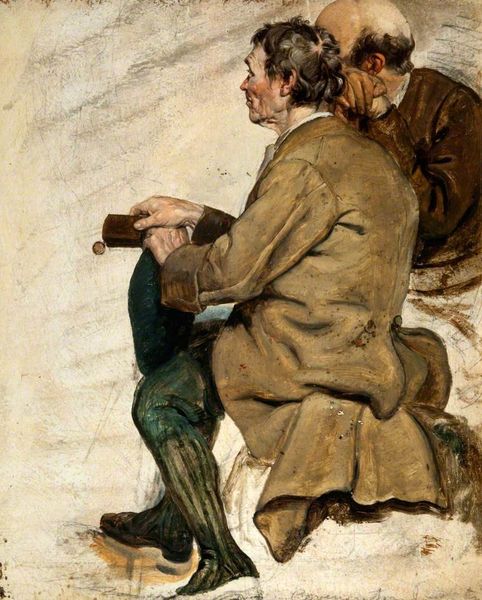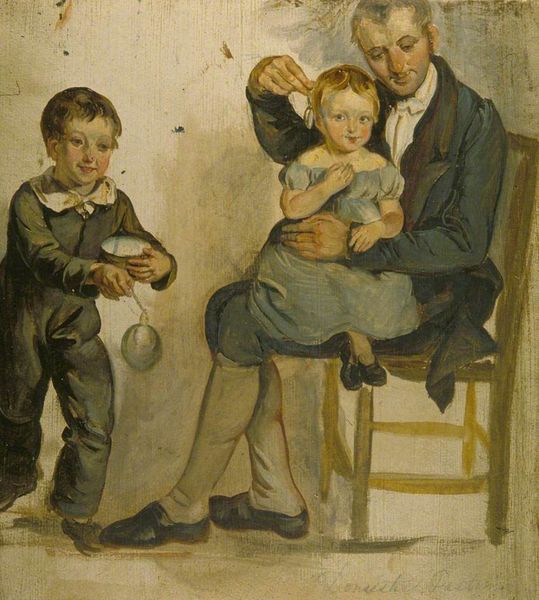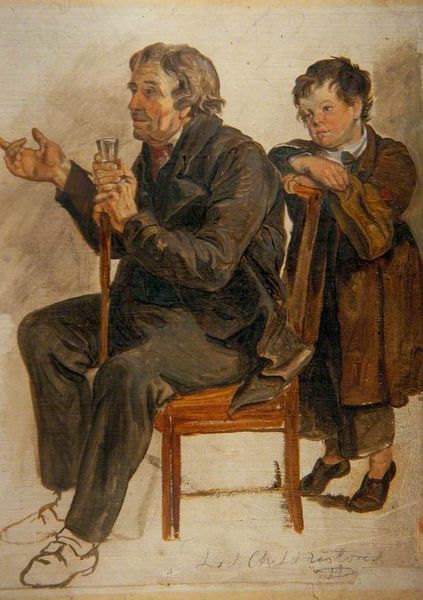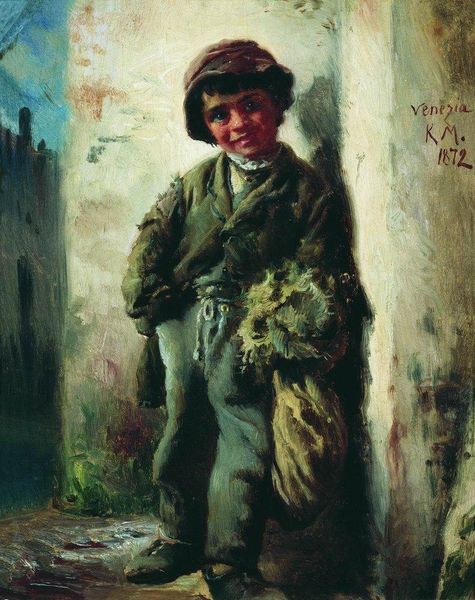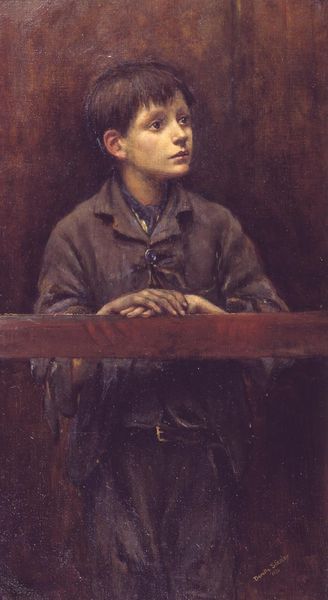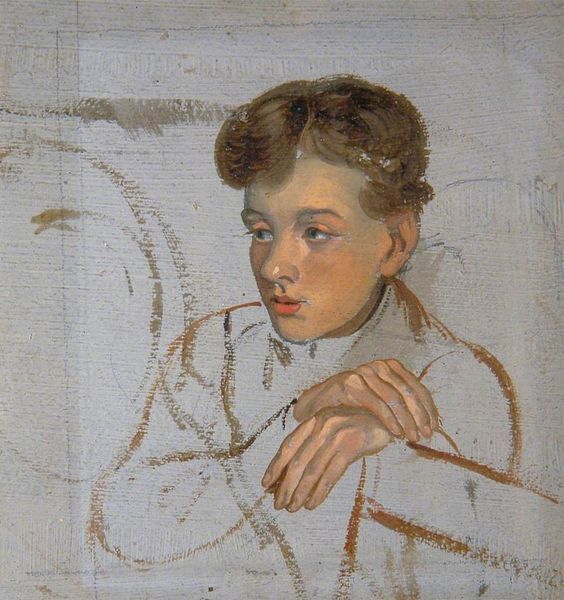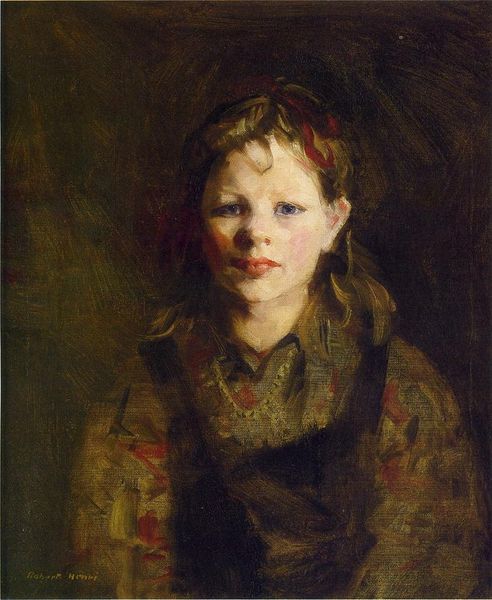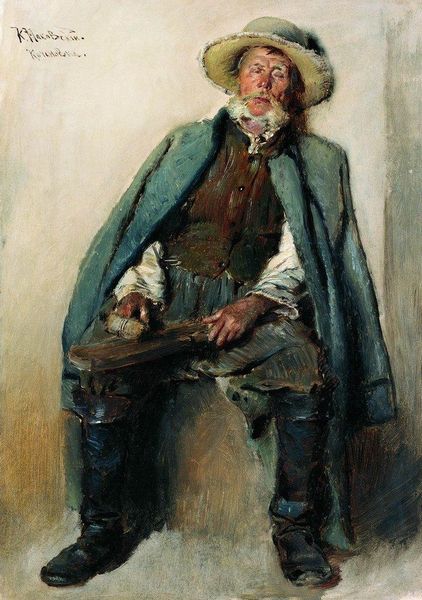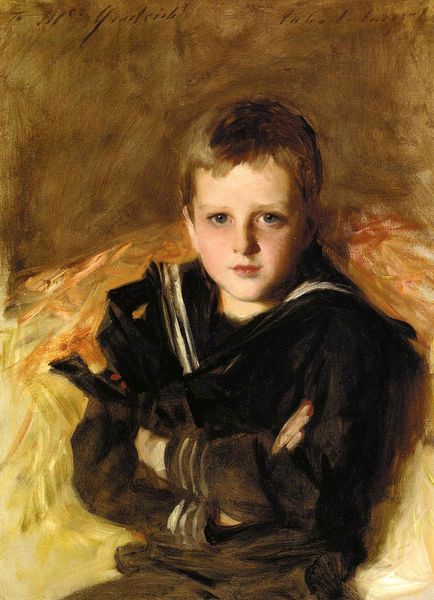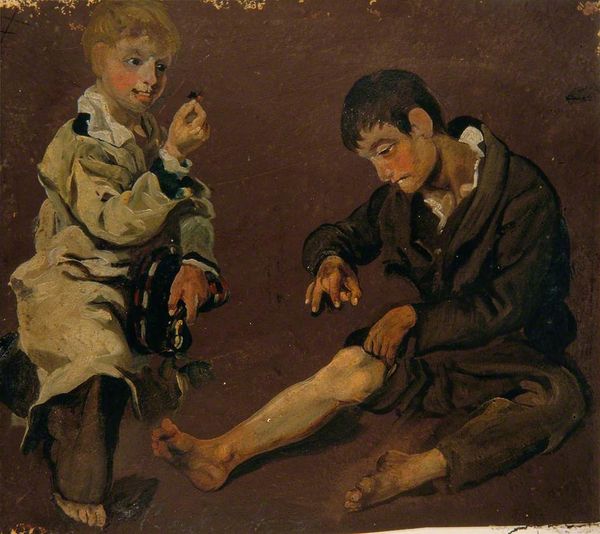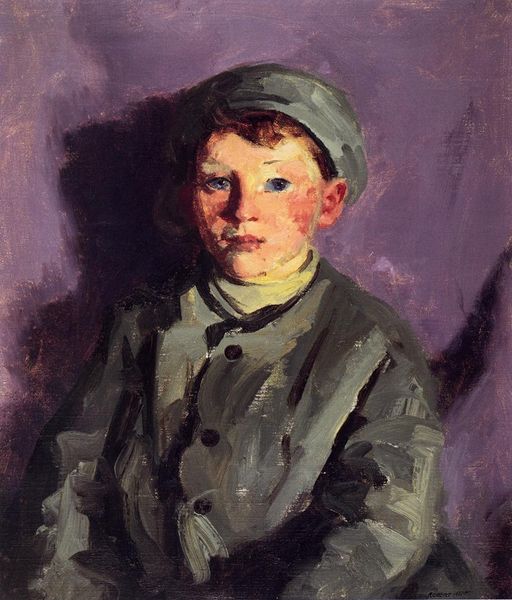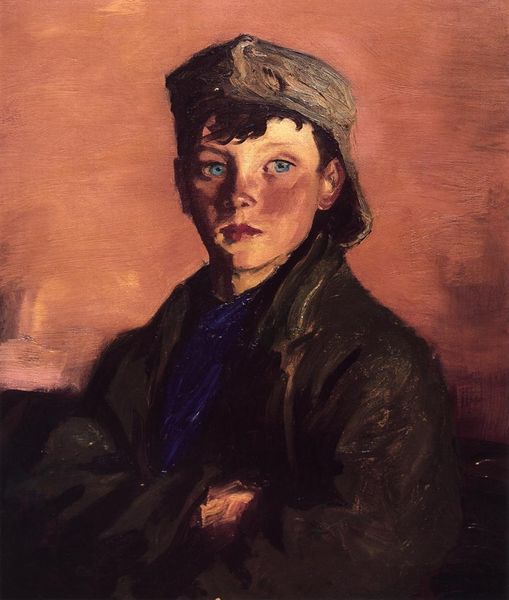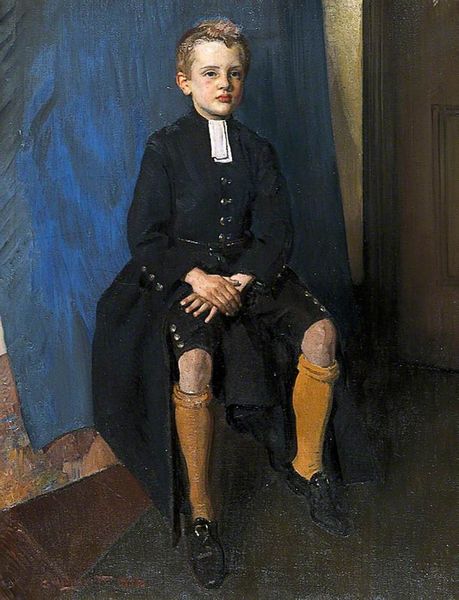
watercolor
#
oil painting
#
watercolor
#
romanticism
#
portrait art
#
watercolor
#
realism
Copyright: Public domain
Editor: Here we have George Harvey’s 1843 watercolor, "Boy Saying His Catechism." I’m struck by its intimate scale and how the artist captured such a candid moment. It feels unfinished, somehow. What catches your eye, what elements stand out to you most? Curator: Immediately, I notice the contrast in rendering. Observe the focal figure, crisply delineated against a sketchier background. Harvey manipulates the viewer's gaze, establishing a visual hierarchy through varying degrees of finish and chromatic intensity. Editor: That's fascinating! So you see the "unfinished" quality as a deliberate artistic choice rather than an oversight? Curator: Precisely. The work exhibits what we might term ‘controlled incompleteness.’ Note also how the color, composition, and pose guide your viewing, a conscious directorial influence in structuring your experience. How do you interpret the subject’s off-center placement? Editor: Perhaps it creates a sense of unease, suggesting he's not entirely comfortable or confident in his position? Curator: An insightful reading. The asymmetry denies a straightforward, celebratory reading, fostering a subtle tension. Moreover, examine the tonality of the piece, from shadows to brighter colorations. How do they shape our emotional or psychological responses? Editor: The use of color feels quite muted, almost melancholic. I hadn’t noticed the sketched figures in the background; those definitely add a layer of complexity. Curator: Indeed. The painting's inherent dualities - finished/unfinished, prominence/invisibility – contribute to its narrative complexity. I learned that attending to visual clues may create different angles to understand this work. Editor: This piece really demonstrates the power of close looking. It certainly provided for a unique experience.
Comments
No comments
Be the first to comment and join the conversation on the ultimate creative platform.
